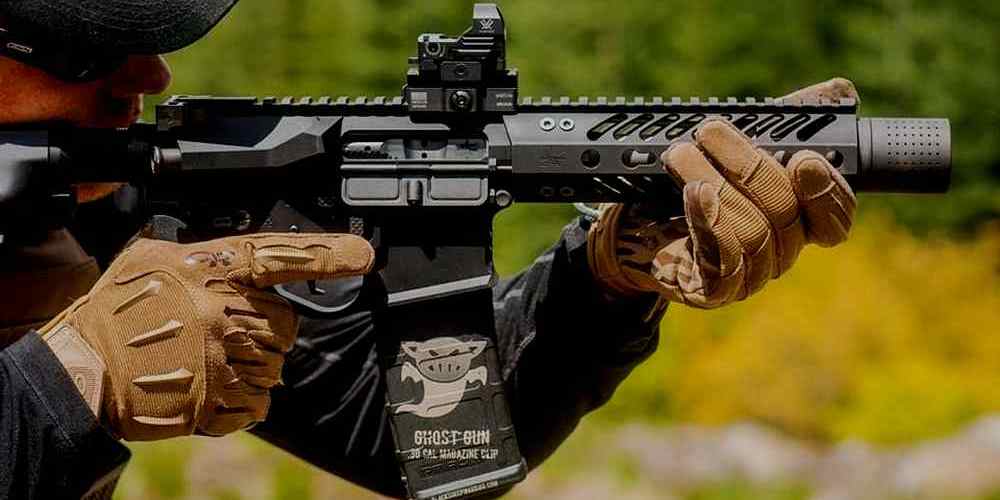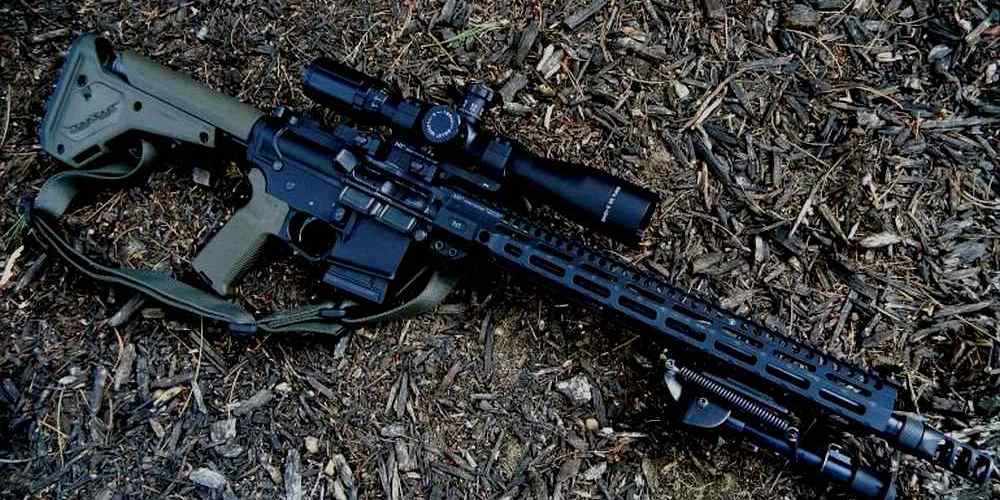“Stay connected, stay coordinated, stay ahead in dynamic environments with Tactical Communication for AR15 Teams.”
Effective Communication Strategies for AR15 Teams
Effective communication is crucial for any team, but it becomes even more critical in dynamic environments such as those encountered by AR15 teams. These teams are often faced with high-stress situations that require quick decision-making and precise coordination. In order to operate effectively in these environments, AR15 teams must have a solid understanding of tactical communication strategies.
One of the key components of effective communication for AR15 teams is the use of clear and concise language. In high-stress situations, there is no room for ambiguity or misunderstanding. Team members must be able to convey information quickly and accurately in order to make split-second decisions. Using clear and concise language helps to ensure that everyone is on the same page and working towards a common goal.
In addition to clear and concise language, AR15 teams must also be proficient in the use of radio communication. Radios are a vital tool for communication in dynamic environments, allowing team members to stay in constant contact with one another. However, radio communication can be challenging, especially in noisy or chaotic environments. AR15 teams must practice using radios regularly in order to ensure that they can effectively communicate with one another when it matters most.
Another important aspect of tactical communication for AR15 teams is the use of standardized communication protocols. These protocols help to ensure that everyone on the team is speaking the same language and following the same procedures. Standardized protocols can include things like call signs, radio frequencies, and response codes. By using standardized protocols, AR15 teams can streamline their communication and reduce the risk of confusion or miscommunication.
In addition to standardized protocols, AR15 teams must also practice effective listening skills. Listening is just as important as speaking when it comes to communication, especially in high-stress situations. Team members must be able to listen actively and attentively in order to understand the information being conveyed to them. By practicing effective listening skills, AR15 teams can ensure that they are able to respond quickly and appropriately to changing circumstances.
Finally, effective communication for AR15 teams also involves the ability to adapt and improvise. In dynamic environments, things can change rapidly, and team members must be able to think on their feet and adjust their communication strategies accordingly. This may involve things like changing radio frequencies, using hand signals, or even resorting to non-verbal communication in certain situations. By being flexible and adaptable, AR15 teams can ensure that they are able to communicate effectively no matter what challenges they may face.
In conclusion, tactical communication is a vital component of effective teamwork for AR15 teams. By using clear and concise language, practicing radio communication, following standardized protocols, honing listening skills, and being adaptable, AR15 teams can ensure that they are able to communicate effectively in dynamic environments. Good communication can mean the difference between success and failure in high-stress situations, making it a skill that all AR15 teams must prioritize and practice regularly.
Importance of Clear and Concise Communication in Dynamic Environments
In dynamic environments, such as military operations or law enforcement scenarios, clear and concise communication is crucial for the success of AR15 teams. Tactical communication plays a vital role in coordinating movements, sharing information, and making split-second decisions. Without effective communication, team members may become disorganized, confused, or even put themselves in danger.

One of the key reasons why clear communication is so important in dynamic environments is the need for quick decision-making. In high-pressure situations, team members must be able to relay information rapidly and accurately to ensure that everyone is on the same page. This can be especially challenging when faced with noise, distractions, or other obstacles that may hinder communication.
Furthermore, clear communication helps to prevent misunderstandings and confusion among team members. In fast-paced environments, there is no room for ambiguity or misinterpretation. By using precise language and clear instructions, team members can avoid costly mistakes and ensure that everyone is working towards the same goal.
Another benefit of clear communication in dynamic environments is the ability to adapt to changing circumstances. In fluid situations, team members must be able to quickly adjust their tactics and strategies based on new information. Effective communication allows for real-time updates and adjustments, ensuring that the team can respond to threats or opportunities as they arise.
To achieve clear and concise communication within AR15 teams, it is essential to establish a common language and set of protocols. This includes using standardized terminology, codes, and signals that all team members understand and can easily interpret. By creating a shared vocabulary, team members can communicate more efficiently and effectively, even in high-stress situations.
In addition to verbal communication, non-verbal cues and signals also play a crucial role in tactical communication. Team members must be able to read each other’s body language, gestures, and facial expressions to understand their intentions and reactions. This non-verbal communication can provide valuable insights into a team member’s state of mind, level of confidence, or readiness to act.
Moreover, effective communication within AR15 teams requires active listening and feedback. Team members must be able to listen attentively to instructions, questions, or concerns raised by their teammates. By actively engaging in the communication process, team members can clarify any misunderstandings, confirm their understanding, or provide feedback on the effectiveness of the communication.
In conclusion, clear and concise communication is essential for the success of AR15 teams operating in dynamic environments. By establishing a common language, using precise terminology, and incorporating non-verbal cues, team members can coordinate their movements, share information, and make quick decisions with confidence. Effective communication not only enhances the efficiency and effectiveness of the team but also ensures the safety and security of all members involved. In high-pressure situations, the ability to communicate clearly can mean the difference between success and failure.
Tactical Communication Techniques for AR15 Teams
Tactical communication is a crucial aspect of any AR15 team’s success in dynamic environments. In high-pressure situations, clear and effective communication can mean the difference between success and failure. Whether you are engaging in a firefight, conducting a room clearance, or navigating through unfamiliar terrain, the ability to communicate effectively with your team members is essential.
One of the key principles of tactical communication is brevity. In fast-paced situations, there is no time for long-winded explanations or unnecessary details. Instead, team members should strive to convey information in as few words as possible, using clear and concise language. This helps to ensure that everyone on the team receives and understands the message quickly, allowing for a rapid and coordinated response.
Another important aspect of tactical communication is the use of standardized terminology. By establishing a set of clear and universally understood terms and phrases, team members can communicate more efficiently and effectively. This helps to avoid confusion and misunderstandings, allowing for seamless coordination between team members.
In addition to brevity and standardized terminology, non-verbal communication also plays a crucial role in tactical situations. Team members should be aware of their body language and gestures, as these can convey important information to their teammates. For example, a simple hand signal can alert team members to a threat or indicate a change in tactics without the need for verbal communication.
Effective communication in dynamic environments also requires active listening. Team members must be attentive to the messages being conveyed by their teammates and be ready to respond quickly and appropriately. This means not only hearing what is being said but also understanding the context and implications of the message.
In high-stress situations, it can be easy for communication to break down. Emotions run high, adrenaline is pumping, and team members may struggle to stay focused and composed. However, maintaining clear and effective communication is even more critical in these moments. Team members must remain calm, focused, and disciplined in their communication, even when under pressure.
To enhance communication within an AR15 team, regular training and practice are essential. Team members should engage in drills and simulations that simulate real-world scenarios, allowing them to hone their communication skills and build trust and cohesion within the team. By practicing different communication techniques and scenarios, team members can develop a shared understanding of how to communicate effectively in a variety of situations.
In conclusion, tactical communication is a vital component of any AR15 team’s success in dynamic environments. By prioritizing brevity, standardized terminology, non-verbal communication, active listening, and regular training, team members can enhance their ability to communicate effectively and coordinate seamlessly in high-pressure situations. Clear and effective communication can mean the difference between success and failure in the field, making it a skill that every AR15 team member should prioritize and master.
Enhancing Team Coordination through Communication in High-Stress Situations
Communication is key in any team environment, but it becomes even more crucial in high-stress situations, such as those encountered by AR15 teams. In dynamic environments where split-second decisions can mean the difference between success and failure, effective communication can make all the difference.
One of the most important aspects of tactical communication for AR15 teams is clarity. Clear and concise communication ensures that everyone on the team understands the plan and their role in executing it. This can help prevent misunderstandings and confusion, which can be deadly in high-pressure situations. Using simple, direct language and avoiding jargon can help ensure that everyone is on the same page.
In addition to clarity, timeliness is also crucial in tactical communication. In fast-paced environments, there is no time to waste on lengthy explanations or unnecessary details. Team members need to be able to convey important information quickly and efficiently, so that everyone can react accordingly. This requires practice and training to develop the ability to communicate effectively under pressure.
Another important aspect of tactical communication is adaptability. In dynamic environments, plans can change in an instant, and team members need to be able to adjust their communication accordingly. This may mean switching from verbal to non-verbal communication, or using different codes or signals to convey information. Being able to adapt to changing circumstances is essential for successful team coordination.
Non-verbal communication is also a key component of tactical communication for AR15 teams. In high-stress situations, verbal communication can be difficult to hear or understand, so team members need to be able to rely on non-verbal cues to convey information. This can include hand signals, gestures, or even eye contact to communicate quickly and effectively without speaking.
Practice is essential for developing effective tactical communication skills. Teams should regularly train together to practice different scenarios and work on their communication skills. This can help build trust and familiarity among team members, so that they can communicate more effectively in high-stress situations. It can also help identify any weaknesses or areas for improvement in the team’s communication strategy.
In addition to practice, debriefing after missions is also important for improving tactical communication. Teams should take the time to review their performance and discuss what went well and what could be improved. This can help identify any communication breakdowns or misunderstandings that occurred during the mission, so that they can be addressed and corrected for future operations.
Overall, tactical communication is a critical component of successful team coordination in dynamic environments. By focusing on clarity, timeliness, adaptability, and non-verbal communication, AR15 teams can improve their ability to communicate effectively under pressure. With practice and training, teams can develop the skills they need to work together seamlessly in high-stress situations, increasing their chances of success and ensuring the safety of everyone involved.
The Role of Communication in Improving Performance and Safety for AR15 Teams
Communication is a critical component of any successful AR15 team. In dynamic environments where split-second decisions can mean the difference between success and failure, clear and effective communication is essential. Whether you are engaging in a tactical operation, training exercise, or competition, the ability to communicate with your team members can greatly enhance performance and safety.
One of the key aspects of tactical communication for AR15 teams is coordination. In order to effectively coordinate movements, tactics, and strategies, team members must be able to communicate with each other in a clear and concise manner. This requires not only the ability to transmit information, but also the ability to receive and interpret it accurately.
In high-stress situations, such as a live-fire exercise or a real-world operation, the ability to communicate effectively can mean the difference between success and failure. Team members must be able to relay critical information, such as enemy positions, movement, and threats, in a timely and accurate manner. This requires a high level of situational awareness and the ability to process information quickly and efficiently.
In addition to coordination, communication also plays a crucial role in ensuring the safety of AR15 teams. By maintaining open lines of communication, team members can alert each other to potential dangers, such as friendly fire or hazardous conditions. This can help prevent accidents and injuries, and ensure that everyone on the team returns home safely at the end of the mission.
Effective communication also fosters a sense of unity and cohesion among team members. By working together and supporting each other through clear and concise communication, team members can build trust and camaraderie. This can lead to improved morale, motivation, and overall performance.
To enhance communication within an AR15 team, it is important to establish clear protocols and procedures. This includes using standardized terminology and signals, as well as practicing active listening and feedback. By establishing a common language and communication framework, team members can ensure that everyone is on the same page and working towards a common goal.
Training is also essential for improving communication within AR15 teams. By conducting regular drills and exercises that focus on communication skills, team members can hone their abilities and become more effective communicators. This can help build confidence and proficiency, and ensure that team members are prepared to handle any situation that may arise.
In conclusion, tactical communication is a vital component of success for AR15 teams operating in dynamic environments. By focusing on coordination, safety, unity, and training, team members can enhance their communication skills and improve their overall performance. By working together and supporting each other through clear and effective communication, AR15 teams can achieve their objectives and complete their missions successfully.




